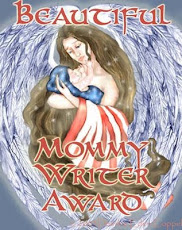Okay – LET’S all learn a new one today – this is the FIRST time I have used this poetry format ~ it’s similar to so many in that it has line and syllable requirements but it also has some rhyming rules to follow and I love the name of it ~ “Marianne”
ALSO, since it is Arbor Day . . . I’d like to throw out a challenge that you
make this poem about a tree. (Just a suggestion, but maybe, give it a try).
Here is the setup ~
The Marianne is a 5-lined verse form that contains both
syllable counts per line AND lines 1, 3, and 5 MUST all have the same
ENDING rhyme.
The lines are meant to be centered on the page. (Social
media formatting rarely complies with that, but for your own record, you
can set it that way).
It was created by Viola Berg.
The Marianne is a “pentastich,” another name for a 5-lined
poem.
It has a title and then the balance of the poem goes as
follows:
Line
1 ~ 4 syllables – ENDING RHYME A
Line
2 ~ 6 syllables – NO
RHYMING
Line
3 ~ 8 syllables – ENDING RHYME A
Line
4 ~ 4 syllables – NO
RHYMING
Line
5 ~ 2 syllables – ENDING RHYME A
Two tools that will be very handy for this poem are the Syllable Counter and Rhymer ~ I suggest you use them. LOL I've seen your syllable counting and rhyming and well, never hurts to double-check your work!! Cheers!!
Here’s my effort – and I LOVE the
mixed media tree I created a few years back ~
You gave me
shadeLet me climb
your branchesSitting here
I was not afraidChildhood
thanksDelayed
© 2024 Stephanie Abney
Okay – you
try it!!
PLEASE REMEMBER ~ any poetry found on this blog, written by me, is my personal
property and may not be used without my permission, other than sharing it as an
example in a lesson or to read it to someone. The same goes for any poems that
are shared in the comments of this blog or elsewhere online as a result of this
challenge. They are the creative property of the person who writes them. These
poems are their original work and no one may use them without their permission.
It is understood that they own the copyright to them as soon as they create
them and especially once they post them. Thanks so much!
*** Also, if you choose to
post your poems on your own blog or elsewhere on social media ~ that’s awesome.
But PLEASE don’t just copy and paste my daily instructions, but rather post
your poem on your blog or your FB wall or wherever AND LINK BACK TO EACH DAY’S
SPECIFIC BLOG POST for others to come here to read the instructions. I’ve spent
considerable time researching the poetry forms and writing them up to share
with you. Thanks for respecting my work.






.jpg)







